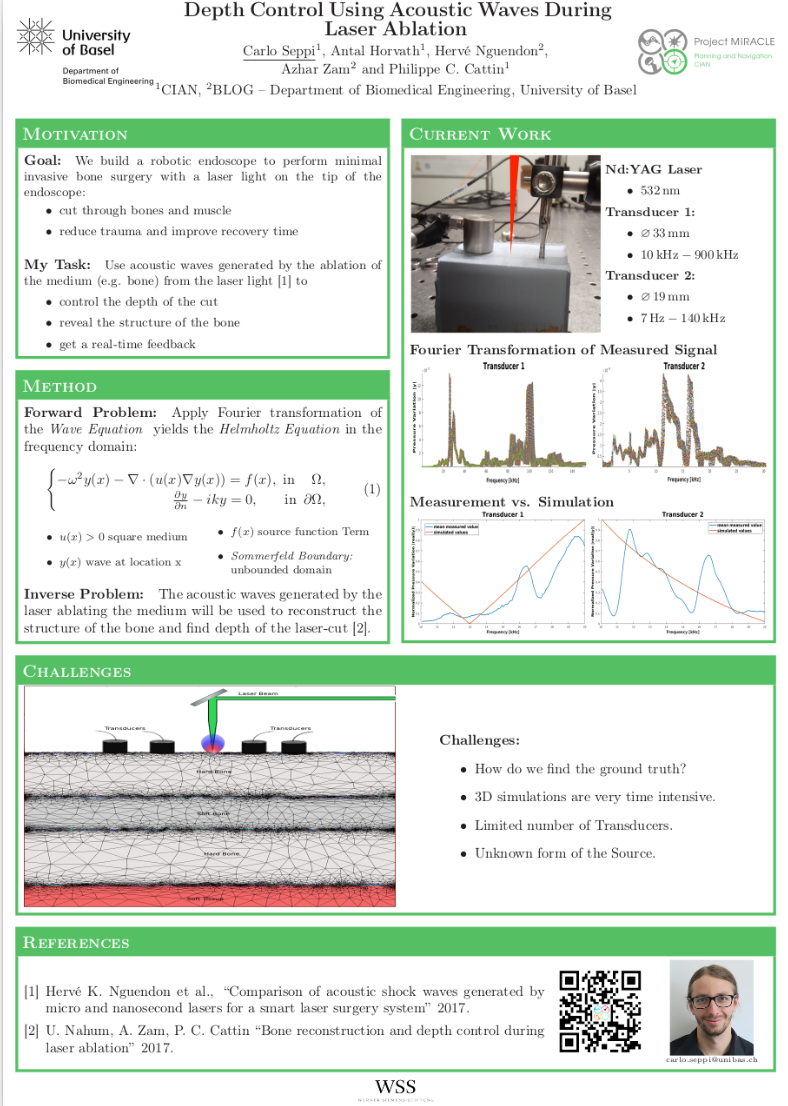Laser Depth Control
In this project, we want to estimate the depth of the laser cut, while reconstructing the structure of the surrounding tissue. The importance of the depth control is to give the surgeon an accurate estimation when the laser cut reached the end of the bone without cutting any soft tissue or a nerve. The accuracy and the run-time are crucial, as our goal is to give the surgeon the depth control in real time. Ablating bone and muscle with a laser generates different acoustic waves. Our goal is to use these acoustic waves in the frequency domain to reconstruct the structure of the bone. The propagation through a medium can be described with the wave equation:
ytt(x, t) − ∇ · (u(x)∇y(x, t)) = f(x, t)
in the time domain, or with the Helmholtz equation:
−ω2y(x) − ∇ · (u(x)∇y(x)) = f(x)
in the time-frequency ω. Here, u(x) > 0 presents the squared medium velocity, f is the source function and y is the pressure variation. Assuming now, that our medium is unknown, we will simulate the medium (e.g. the bone) using the acoustic waves generated by the laser ablating on it. While cutting with the laser we get an illumination of the unknown medium. Hence, allowing us to find the structure of the bone and the position of the source.
Project leader: Carlo Seppi
U. Nahum, A. Zam, P. C. Cattin. (2019) Bone Reconstruction and Depth Control During Laser Ablation. In: Vrtovec T., Yao J., Zheng G., Pozo J. (eds) Computational Methods and Clinical Applications in Musculoskeletal Imaging. MSKI 2018. Lecture Notes in Computer Science, vol 11404. Springer, Cham. read
No open projects currently





